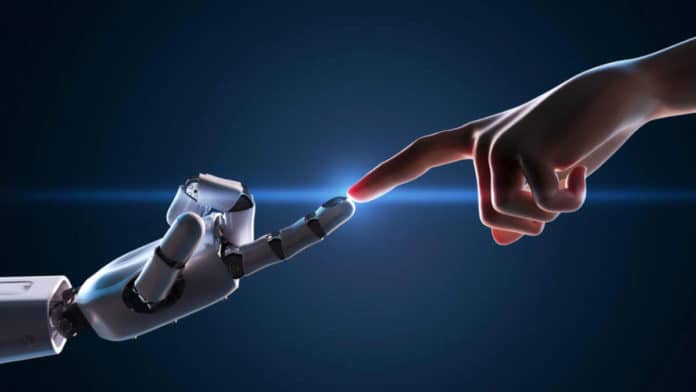A team of researchers from the City University of Hong Kong (CityU), South University of Science and Technology in Shenzhen, and the Carnegie Mellon University of Pittsburgh have developed a new soft tactile sensor with skin-comparable characteristics. The sensor could contribute to various applications in the robotics field, such as smart prosthetics and human-robot interaction.
A robotic gripper with the new tactile sensor mounted at the fingertip could accomplish challenging tasks such as stably grasping fragile objects and threading a needle.
The sensor is in a multi-layered structure like human skin. It includes a flexible and specially magnetized film of about 0.5mm thin as the top layer. When an external force is exerted on it, it can detect the change of the magnetic field due to the film’s deformation.
Importantly, it can decouple the external force automatically into two components – normal force and shear force, providing the accurate measurement of these two forces, respectively.
“We have developed an efficient tactile super-resolution algorithm using deep learning and achieved a 60-fold improvement of the localization accuracy for contact position, which is the best among super-resolution methods reported so far,” said Dr. Shen Yajing, Associate Professor at CityU’s Department of Biomedical Engineering (BME).
The algorithm can help improve the physical resolution of a tactile sensor array with the least number of sensing units, thus reducing the number of wirings and the time required for signal transmitting.
By mounting the sensor on the fingertip of a robotic gripper, the team demonstrated that robots could perform challenging tasks. For example, the robotic gripper stably grasped fragile objects such as an egg while an external force tried to drag them away or threaded a needle through teleoperation.
“The super-resolution of our sensor helps the robotic hand to adjust the contact position when it grasps an object. And the robotic arm can adjust force magnitude based on the force decoupling ability of the tactile sensor,” explained Dr. Shen.
The sensor can be easily extended to the form of sensor arrays or even continuous electronic skin that covers the whole body of the robot in the future. Continuous development can lead the technology to create prosthetic hands and other cyborg body parts that can feel and sense surroundings much like a human.
